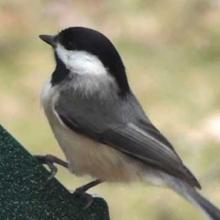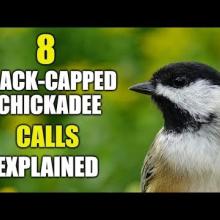

Join BirdNote tomorrow, November 30th!
Illustrator David Sibley and actor H. Jon Benjamin will face off in the bird illustration battle of the century during BirdNote's Year-end Celebration and Auction!
In higher animals, the brain is like a Lamborghini — amazing engineering, but expensive to run. In a human, the brain uses about 10 times more energy than other organs. A bird's system is exquisitely attuned to this expense. Several species, including Black-capped Chickadees, have adapted in a clever way. You can usually hear these chickadees calling throughout fall and winter. But they aren’t singing much, because they don’t need to. In their brains, the centers that control how they learn and give voice to songs shrink. But as the birds resume singing during spring, the control centers in the brain rejuvenate.
This show brought to you by The Bobolink Foundation.
[Black-capped Chickadee call, ML 169032]
A bird's system is exquisitely attuned to this expense. And among several carefully studied species, like the Black-capped Chickadee, a very smart adaptation has evolved: [Black-capped Chickadee call, ML 169032]
You can usually hear the Black-capped Chickadees call throughout fall and winter. But they aren’t singing much. They don't need to. So in their brains, the centers that control how they learn and give voice to songs shrink. But as spring nears and the birds resume singing in earnest, these control centers in the brain rejuvenate. [Black-capped Chickadee song, ML 163374]
This same seasonal fluctuation appears true of the chickadee’s hearing ability. Experiments have shown that a bird’s hearing is more acute in spring. So is their ability to interpret sounds. This may help male birds tell the difference between a neighboring male he already knows and an interloper who's infringing on his territory. And more finely attuned hearing can also help a female bird rate the songs of males she hears, so she can pick out the best partner. [Black-capped Chickadee song, ML 163374]
All of which means that seasonal changes in the gray matter itself put birds’ brains in a class by themselves.







